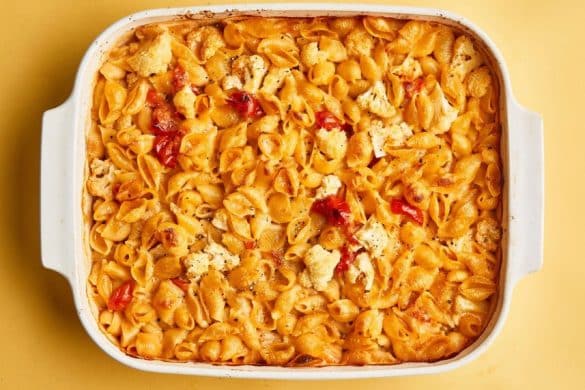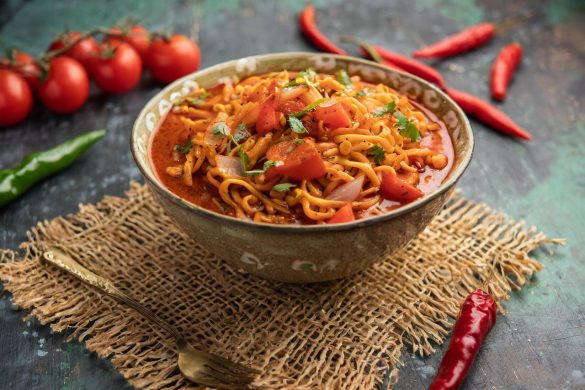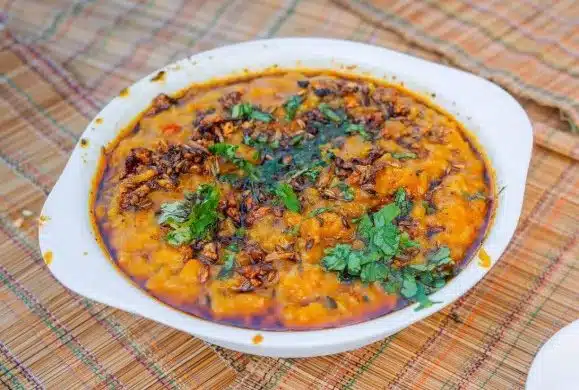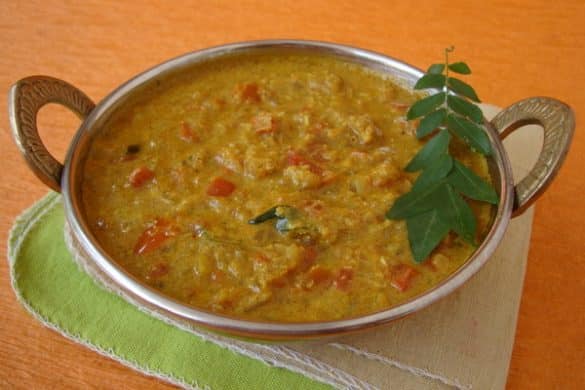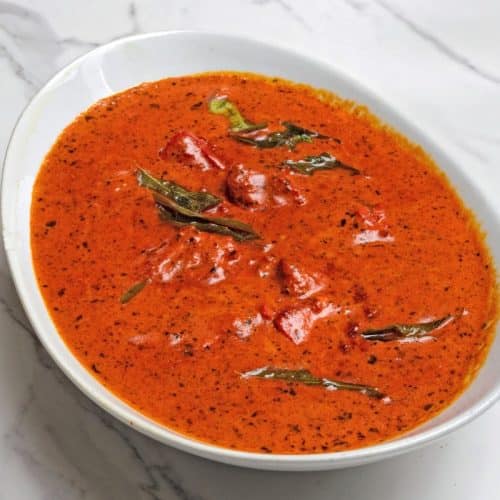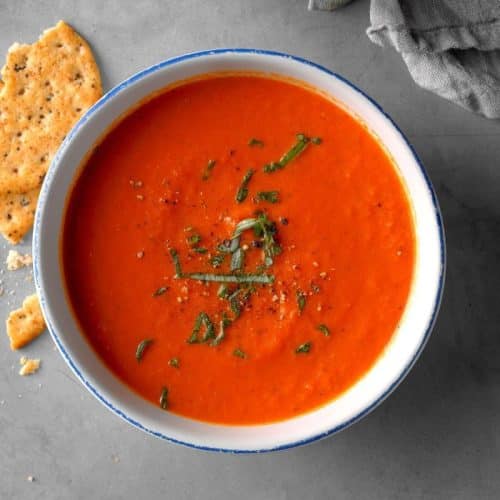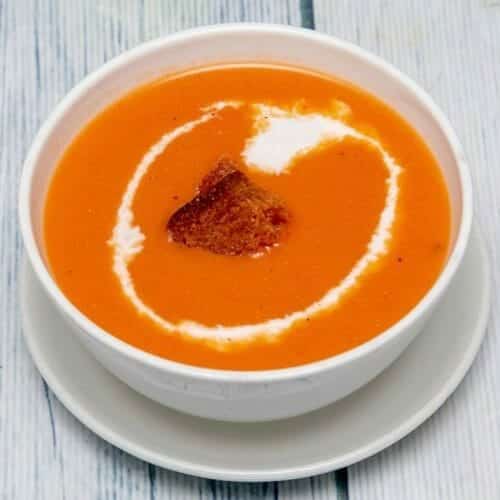Kerala Style Tomato Dal is a delightful fusion of creamy toor dal and the tangy richness of ripe tomatoes, seasoned with a blend of spices that brings out the essence of Kerala cuisine. This dish, often paired with rice or chapati, is perfect for a comforting meal. With the aromatic addition of curry leaves, mustard seeds, and coconut, this recipe offers a flavorful and satisfying experience. Using baby onions and green chillies adds layers of taste, making it a unique dal preparation.
About the Recipe
Kerala Style Tomato Dal stands out with its rich, tangy flavour and creamy texture. Originating from Kerala, this dish combines toor dal and ripe tomatoes with spices and coconut. The recipe’s unique flavour comes from tempering with mustard seeds, curry leaves, and baby onions, adding a delightful aroma and taste. Perfect for vegetarians, it can be easily customized for different dietary needs. Serve it with rice or chapati for a complete meal. The simplicity of the ingredients and the depth of flavour make this dish a must-try for anyone interested in Indian cuisine.
Why You Will Love This Recipe
Kerala Style Tomato Dal perfectly balances tangy and savoury flavours, making it an instant favourite. The combination of creamy dal and juicy tomatoes creates a comforting texture while tempering mustard seeds, curry leaves, and baby onions adds a burst of aroma and taste. This dish is easy to prepare and brings the authentic taste of Kerala to your kitchen. Whether you’re cooking for family or friends, this Tomato Dal will surely be a hit, offering a delicious and nutritious meal.
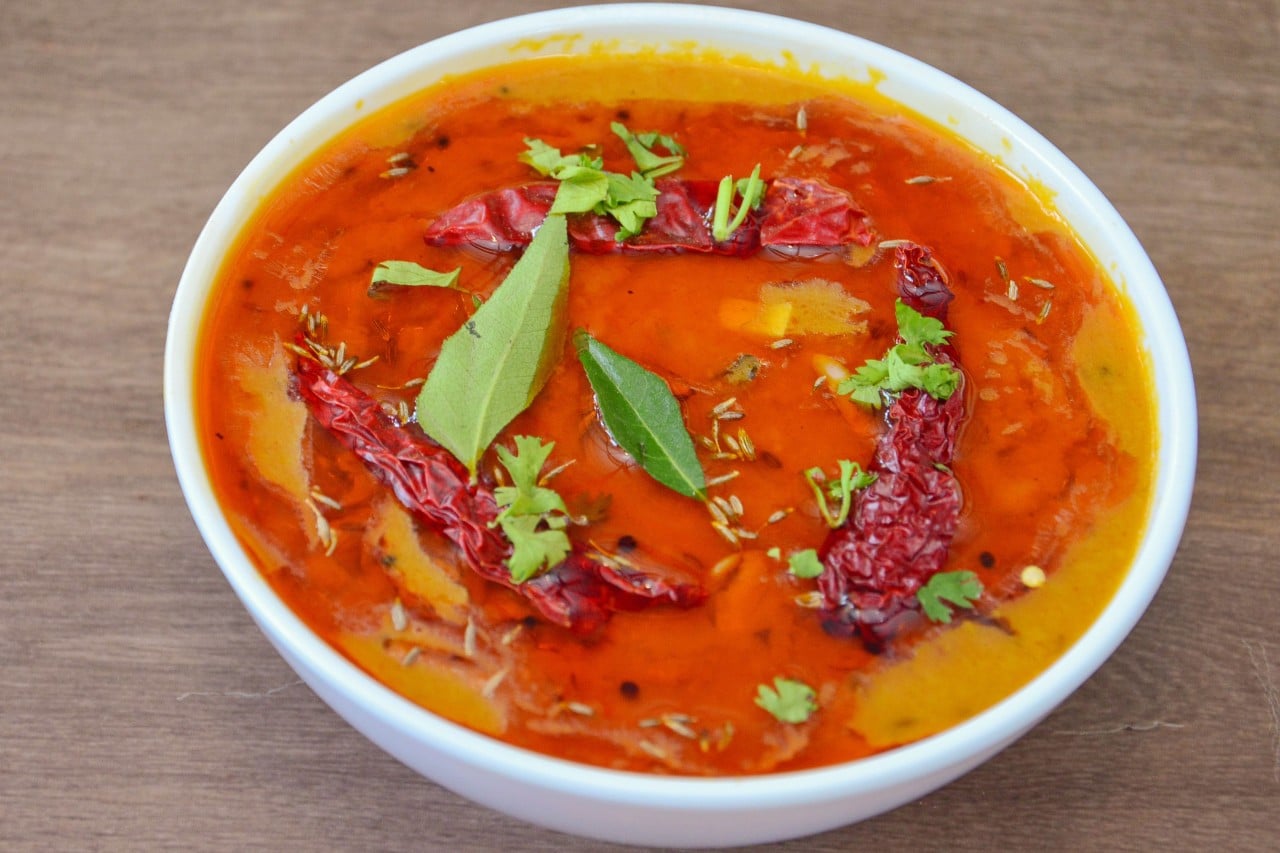
Kerala Style Tomato Dal
Cooking Tips
For the best results, cook the toor dal until soft and creamy. Fresh, ripe tomatoes will give the dal a richer flavour. Adjust the number of chillies based on your spice preference. When tempering, let the mustard seeds fully splutter before adding other ingredients to release their full flavour. If you prefer a smoother dal, you can blend it before adding the tempering.
Serving and Storing Suggestions
Serve Kerala Style Tomato Dal hot with steamed rice or chapati. This recipe serves four and can be prepared in about 45 minutes, with 20 minutes of active cooking time. Store any leftovers in an airtight container in the refrigerator for up to 3 days. Reheat gently on the stove or microwave, adding water if it thickens too much.
Similar Recipes
- Sambar
- Coconut Chutney
- Tomato Rasam
- Vegetable Korma
- Lentil Soup
Nutrient Benefits
Toor dal is rich in protein and fibre, making it a healthy addition to your diet. Tomatoes are high in vitamins A and C, providing antioxidants and promoting good health. Coconut adds healthy fats and a rich flavour, while spices like cumin and turmeric offer anti-inflammatory benefits. This combination makes Kerala-style tomato Dal not only delicious but nutritious, too.

Kerala Style Tomato Dal
Ingredients
- 1 Glass Toor Dal
- 4 Ripe Tomatoes (Finely Chopped)
- 2 Green Chilies (Split)
- 4 Red Chilies
- 2 tsp Cumin Seeds
- 1/2 Coconut (Grated)
- 5-6 Baby Onions (Finely Chopped)
- Few Curry Leaves
- 1 tsp Mustard Seeds
- 2 tbsp Cooking Oil or Ghee
- 1 tsp Turmeric Powder
- Salt to Taste
- Water (as Required)
Instructions
- In a pressure cooker, cook the toor dal with four glasses of water until it becomes a paste.
- Transfer the cooked dal to a vessel and add the chopped tomatoes, salt, turmeric powder, and green chillies. Cook until the tomatoes are soft.
- Grind the grated coconut, three red chillies, and cumin seeds into a paste.
- Add the coconut paste to the dal and cook for another 5 minutes. Add more water if needed.
- Heat the oil/ghee in a separate pan and add mustard seeds. Let them splutter.
- Add the curry leaves and the remaining red chilli. Sauté for a minute.
- Add the chopped baby onions and sauté until golden brown.
- Add this seasoning to the dal. Mix well.
- Serve hot with rice or chapati.
Sign up for our newsletter
Frequently Asked Questions:
How can I make Kerala Style Tomato Dal less spicy?
To make Kerala Style Tomato Dal less spicy, reduce the number of green and red chillies in the recipe. You can also deseed the chillies to lower the heat. Adjust the spice level to your preference, and remember, you can always add more spices later if needed.
Can I use a different type of dal for this recipe?
Yes, you can use other types of dal, such as moong dal or masoor dal. However, the flavour and texture might vary slightly. Toor dal is traditionally used in this recipe for its creamy texture and mild flavour, perfectly complementing the tangy tomatoes.
What can I serve with Kerala Style Tomato Dal?
Kerala Style Tomato Dal pairs wonderfully with steamed rice or chapati. You can also serve it with other Indian breads like naan or roti. Consider serving it alongside vegetable stir-fry, papadum, and a simple cucumber salad for a complete meal.
Is this recipe suitable for vegans?
Yes, Kerala-style tomato Dal is vegan. Cooking oil is used instead of ghee. The recipe uses plant-based ingredients, making it suitable for a vegan diet. Ensure all other components, such as the coconut and spices, are free from animal products.
How do I store leftover Kerala Style Tomato Dal?
Store any leftover Kerala Style Tomato Dal in an airtight container in the refrigerator for up to 3 days. Add a little water to adjust the reheating consistency, as the dal may thicken upon cooling. Reheat on the stove or in the microwave until warmed through.


